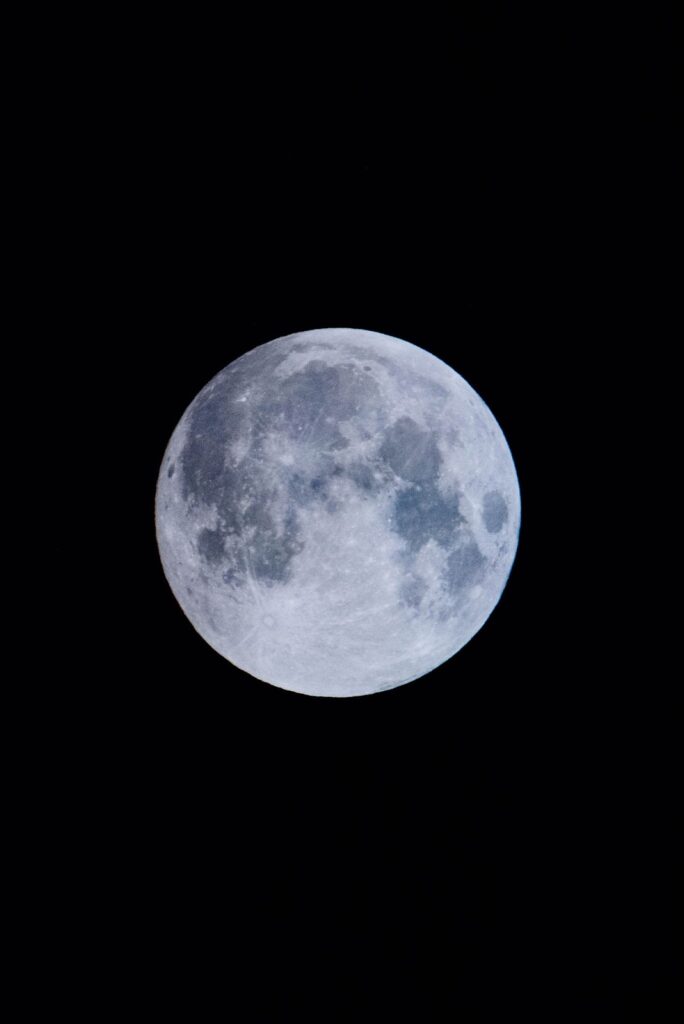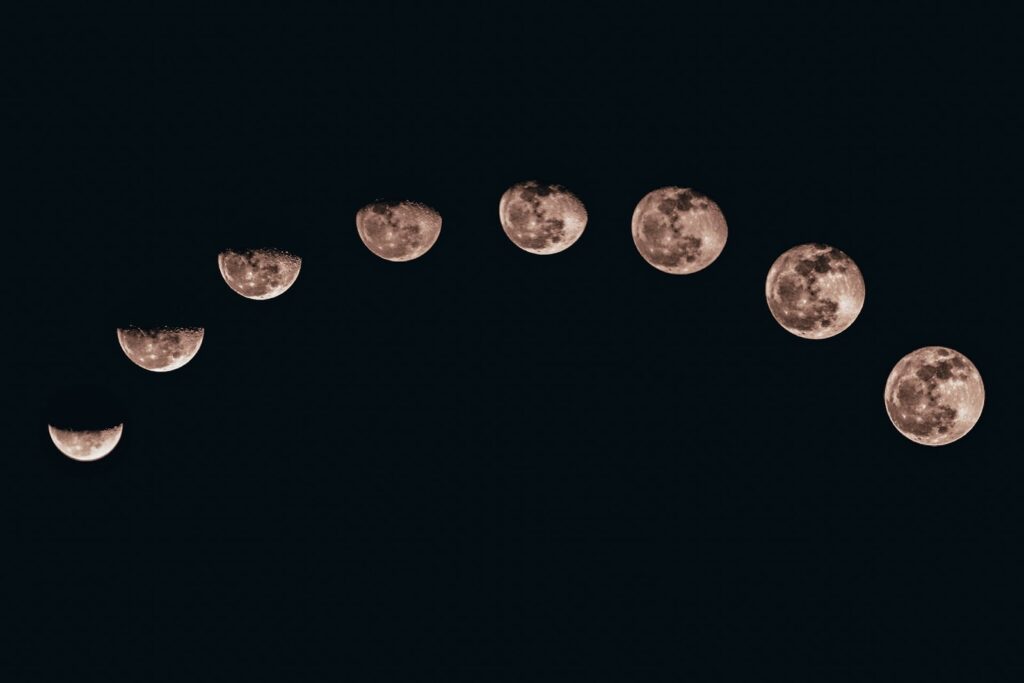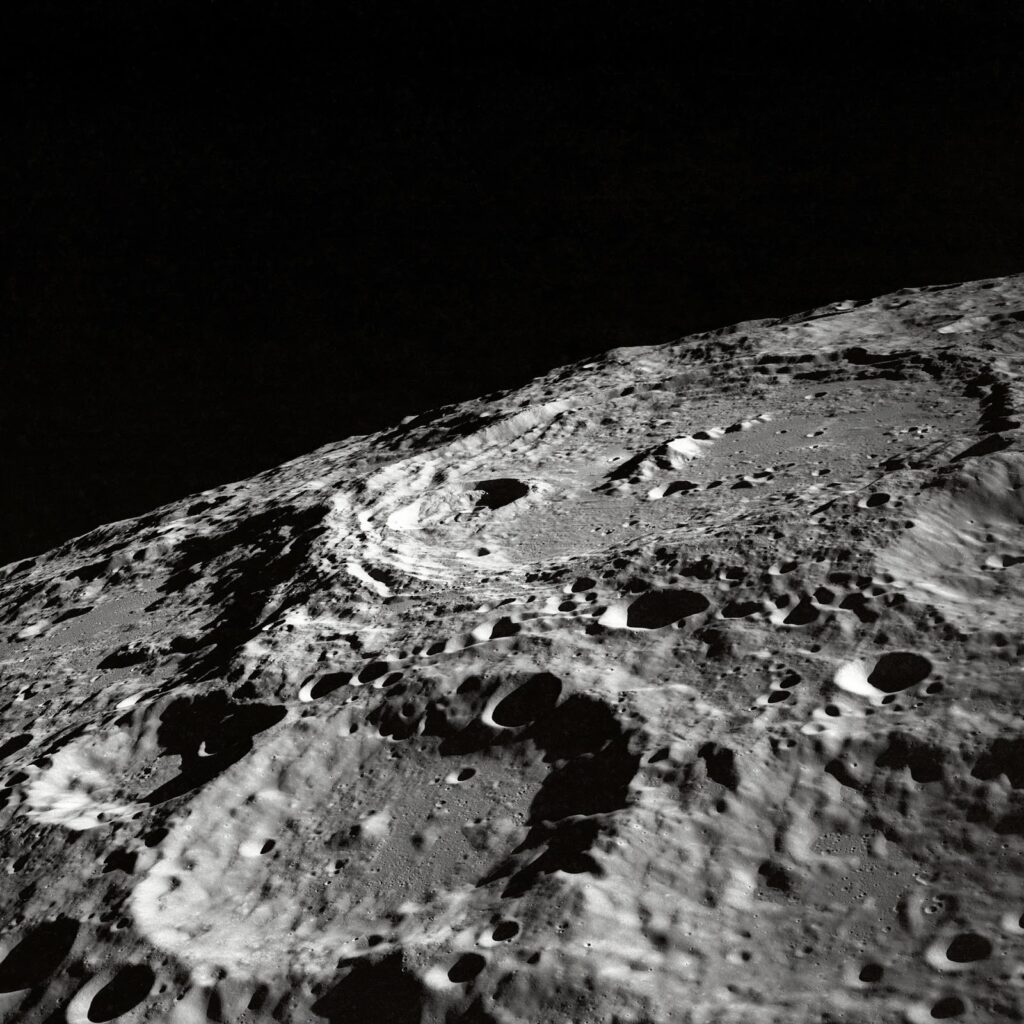There are a lot of interesting questions regarding our solar system and one that we hear quite often is “when was the moon discovered?” In this article we are going to take a look at our planet’s own natural satellite to try and answer a few questions about it and help you find out when the moon was discovered.
What Is the Moon?
The rather unimaginatively named Moon is planet earth’s only natural satellite. A fraction of the size of our planet it is the fifth largest natural satellite in our solar system making it the largest in comparison to its parent planet.

It is considered a planetary-mass object that has a differentiated rocky body which technically makes it a satellite planet. However the Moon lacks any significant atmosphere, hydrosphere or magnetic field. It does however exert its own surface gravity that is roughly one-sixth that of Earth’s. As a moon, its gravity is second only to Jupiter’s moon Io.
What Is the Moon’s Orbit?
The Moon’s orbit is not completely circular so its orbit around the earth is at an average distance of 384,400 km. This is roughly 30 times the earth’s diameter. This orbit and the Moon’s gravitational forces are the main influencers of the Earth’s tidal activity and the slow lengthening of the planet’s days.
It takes the Moon around 27.3 days to complete a full rotation around the earth. During this time the amount of the satellites earth facing surface which is illuminated by the sun varies from zero to almost 100%.
Historically when the Moon was new it was in a much closer orbit to Earth. It would have appeared much larger in the sky during this time. As time has passed the Moon’s orbit has expanded further outward increasing the length of the orbit at the same time.
When Was the Moon Formed?
A widely accepted theory for the Moon’s formation suggests that it formed around 4.51 billion years ago shortly after Earth itself was drawn together. It is thought a huge Mars sized object struck the newly formed planet Earth ejecting debris into orbit around the planet.

The debris from this proposed impact of Earth was held in orbit around the planet eventually forming into the Moon we know today. Pulled together by gravity this same gravity exists today holding the moon together and affecting the Earth as well.
Isotope Dating
Having visited the Moon’s surface we have been able to take samples which were tested using isotope dating. The result of these tests indicate that the Moon formed around 50 million years after the proposed origins of the Solar System itself.
Other Moon Origin Theories
Fission
One theory has been posited in the past whereby the Moon was created through fission from Earth’s crust. This would have been caused by centrifugal force throwing matter into orbit. It is however unlikely as it would require a very high rate of initial rotation by the planet Earth.
Capture of a Passing Moon
Some have theorized in the past that the Moon did not originate from Earth but was from further away. The theory suggests that the Moon was captured into orbit around Earth as it was passing close by. This again has been debunked because it would require an unfeasibly extended atmosphere of Earth to not only dissipate the energy of a passing moon but to capture it in a new orbit.
Co-Formation
There have been theories that the Earth and the Moon developed together at the same time as part of the same primordial accretion disc. This however seems unlikely due to low levels of metal on the Moon. Had they formed together the Moon would have comparable levels of metals within its surface.
How Big Is the Moon?
As mentioned Earth’s Moon is the fifth largest in our solar system but just how big is it? The Moon has a diameter of roughly 3,500 kilometers which is more than a quarter of Earth’s. When we look at the surface of a full Moon its width is comparable to that of the country of Australia.
The Moon’s surface area is roughly 38 million square kilometers and its weight is estimated to be 1/81 of Earths. This density is why the Moon has the second highest gravity of all the moons in our solar system.
Exploration of the Moon
At present the Moon is the only other place beyond earth that humans have set foot. Some 24 humans have traversed the 249,000 kilometers between Earth and the Moon with 12 of them actually setting foot on the surface. There have also been more than 100 robotic visitors to the Moon.

Post War Advancements
Technologies created during World War II led to the first launch systems. These systems reached capabilities that allowed both the Soviet Union and the United States to launch spacecrafts into space. This would lead to both the Cold War and the so-called Space Race.
In 1959 the first humanmade object Luna 1 escaped Earth’s gravity and passed close to the Moon. This would lead to a decade of advancements and a race to land humans on the Moon’s surface. In 1969 the US through the Apollo 11 mission landed men on the Moon. Neil Armstrong was first to set foot on the lunar surface.
The Humans to date who have walked on the moon are:
- Neil Armstrong (1930-2012)–Apollo 11
- Edwin “Buzz” Aldrin (1930-)–Apollo 11
- Charles “Pete” Conrad (1930-1999)–Apollo 12
- Alan Bean (1932-2018)–Apollo 12
- Alan B. Shepard Jr. (1923-1998)–Apollo 14
- Edgar D. Mitchell (1930-2016)–Apollo 14
- David R. Scott (1932-)–Apollo 15
- James B. Irwin (1930-1991)–Apollo 15
- John W. Young (1930-2018)–Apollo 10 (orbital), Apollo 16 (landing)
- Charles M. Duke (1935-)–Apollo 16
- Eugene Cernan (1934-2017)–Apollo 10 (orbital), Apollo 17 (landing)
- Harrison H. Schmitt (1935-)–Apollo 17
When was the Moon Discovered?
So finally we come to the big question: when was the Moon discovered? This is a difficult question to answer really because the Moon predates humans on this planet by billions of years. When our first human ancestors walked the planet the Moon shone above them in the night sky and was likely even more prominent as it would have been closer to Earth.
It is hard to say the Moon was therefore discovered as it is something all forms of life on this planet with the ability of sight would have seen dating back billions of years. The question then should probably be more accurately asked as when did we first realize what the Moon was?
Earliest Known Acknowledgement of the Moon
Some experts believe that 20,000 – 30,000 year old tally sticks may have been used to observe the phases of the Moon. It is thought that the Moon’s phases were being used to keep time through its waxing and waning. One of the earliest-discovered possible depictions of the Moon is from a 5000-year-old rock carving found in Knowth, Ireland.
It was Greek philosopher Anaxagoras around 400 hundred BC that reasoned that the Sun and Moon were both spherical rocks. He was at least half right but he was also accurate in determining that one reflected the light of the other. This is the reason we can see the Moon in the first place as it does not emit its own light it reflects the light of our sun.
So essentially for tens of thousands of years humans have made note of the Moon and made use of its consistent phases to track time. During the late centuries BC independently several societies started to think of the Moon as a sphere of rock. Arguably then the earliest accurate assumptions of what the Moon really is date back to the 5th and 4th centuries.
Final Thoughts
It is hard to place a date of the discovery of something that has always been there. The “discovery” of the Americas for example is a contentious issue. It’s always been there but Columbus came across it by accident claiming he had discovered it. Evidence however proves that Vikings found and landed on the North American continent hundreds of years before Columbus.
The truth is neither discovered the Americas because thousands of migrating hunter-gatherers had arrived tens of thousands of years earlier. When it comes to the Moon any creature with the power of sight that has ever lived on this planet can have seen its existence.
In truth the Moon was never discovered but there have been milestones in its understanding. The US however can lay claim to being the first to walk upon its surface back in 1969.
